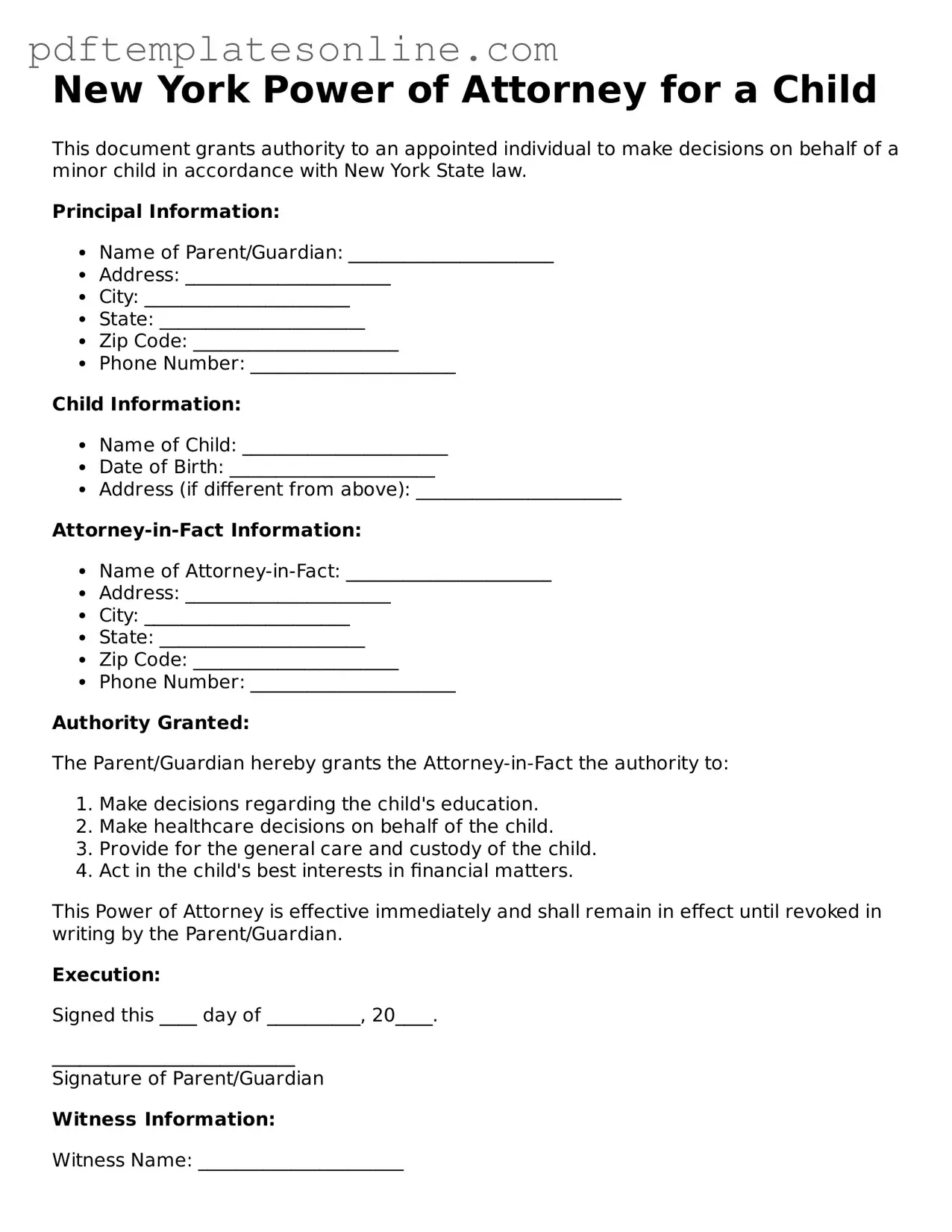Filling out the New York Power of Attorney for a Child form can be a straightforward process, but many people make common mistakes that can lead to complications down the line. Understanding these pitfalls can save you time and frustration. Let's explore ten frequent errors individuals often encounter.
One major mistake is failing to include all necessary information. The form requires specific details about both the child and the agent. Omitting even one piece of information, like the child’s full name or date of birth, can render the document invalid. Always double-check that every section is filled out completely.
Another common error is neglecting to sign the form. It might seem obvious, but some individuals forget to sign or date the document, which is essential for its legality. Make sure that both parents or guardians sign the form where required. If one parent is unavailable, proper steps must be taken to ensure that the form is still valid.
People often overlook the importance of selecting the right agent. This person will have significant authority over your child's welfare. Choose someone trustworthy and capable of making decisions in your child's best interest. Rushing this decision can lead to future conflicts or issues.
Additionally, many fail to specify the powers granted to the agent. The form allows you to outline specific responsibilities, such as medical care or educational decisions. Not clearly defining these powers can lead to confusion or disputes later on.
Another mistake is not considering the duration of the power of attorney. Some individuals forget to specify how long the arrangement will last. It’s crucial to define whether the authority is temporary or ongoing. This clarity helps avoid misunderstandings in the future.
In some cases, people do not provide backup instructions. While the primary agent is important, naming an alternate agent can ensure that there’s someone ready to step in if the primary agent cannot fulfill their role. This simple step can prevent complications when the unexpected occurs.
Many also fail to keep copies of the completed form. After filling out the document, it’s vital to make copies for all parties involved. This includes the agent, the child’s school, and healthcare providers. Having these copies on hand can streamline any necessary processes.
Another oversight is not updating the form when circumstances change. Life is unpredictable, and situations can evolve. If there are changes in your relationship with the agent or the child's needs, revisit and update the form accordingly.
Lastly, some individuals neglect to consult with professionals. While it may seem straightforward, getting advice from a legal expert can provide peace of mind. They can help you navigate any complexities and ensure the document meets all legal requirements.
By being aware of these common mistakes, you can fill out the New York Power of Attorney for a Child form with confidence. Taking the time to do it right can make all the difference in ensuring your child's well-being and your peace of mind.
